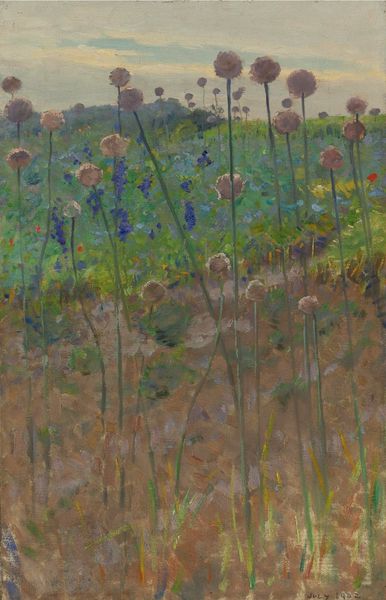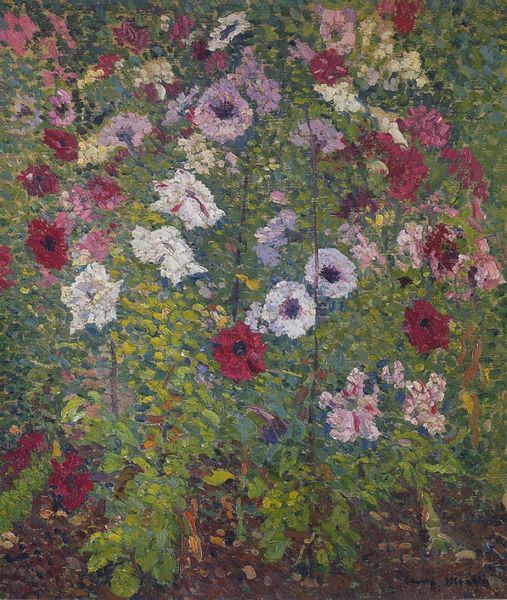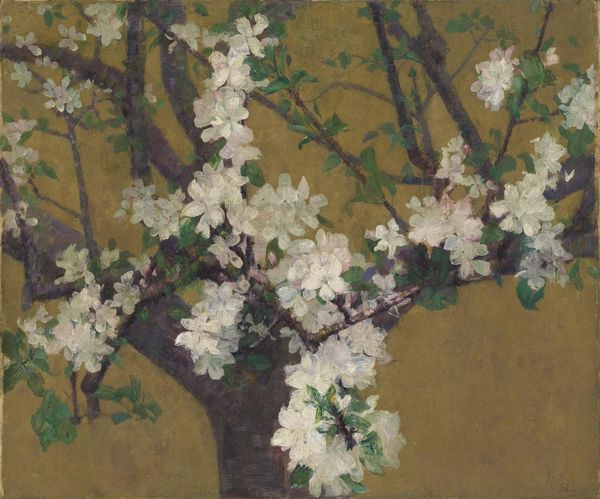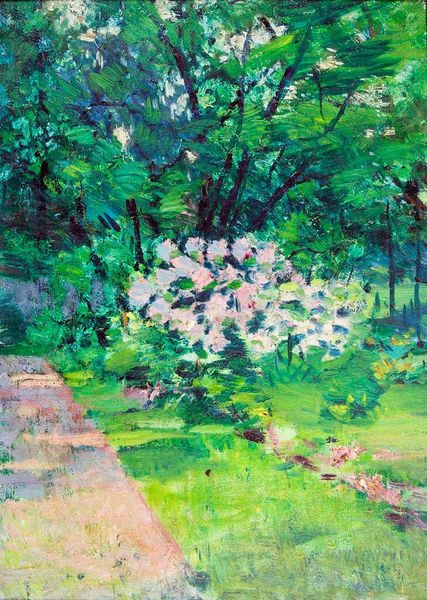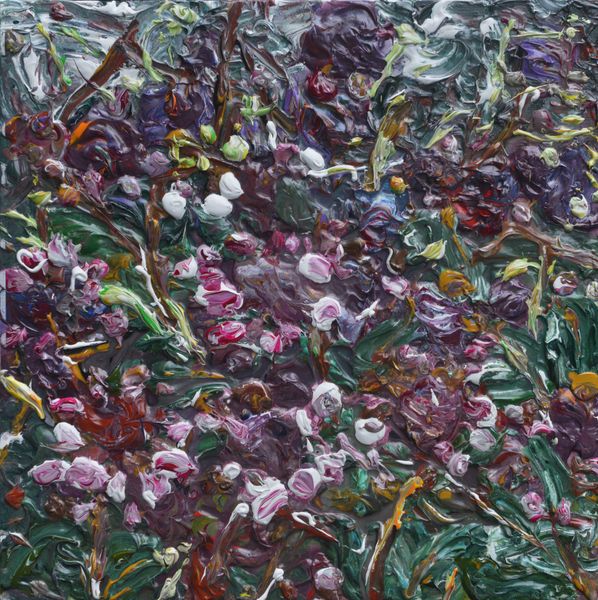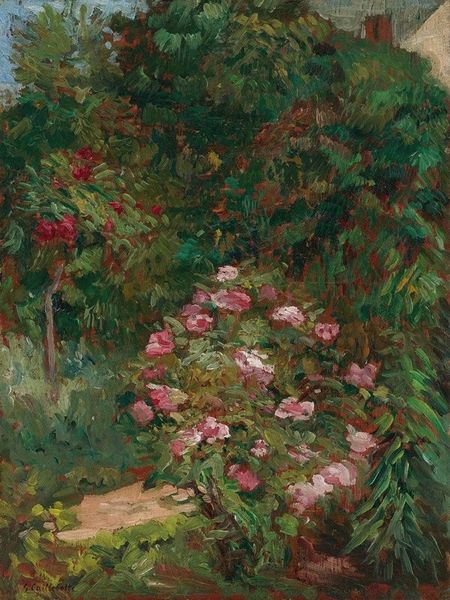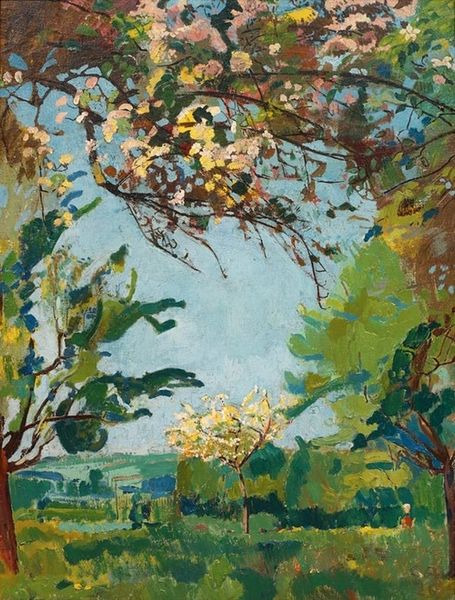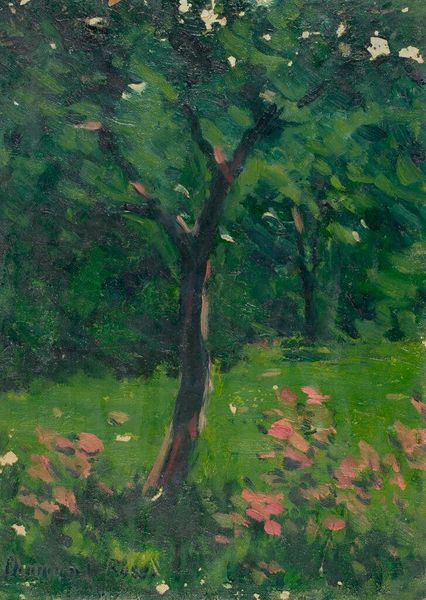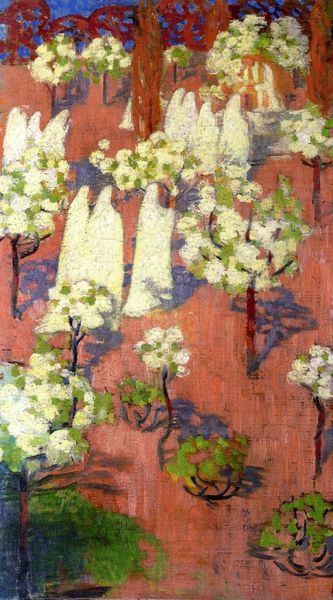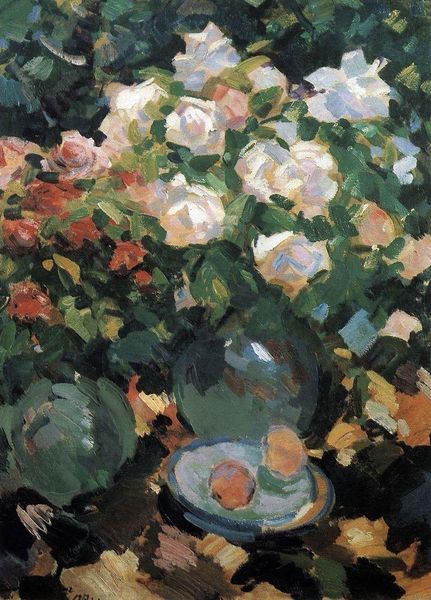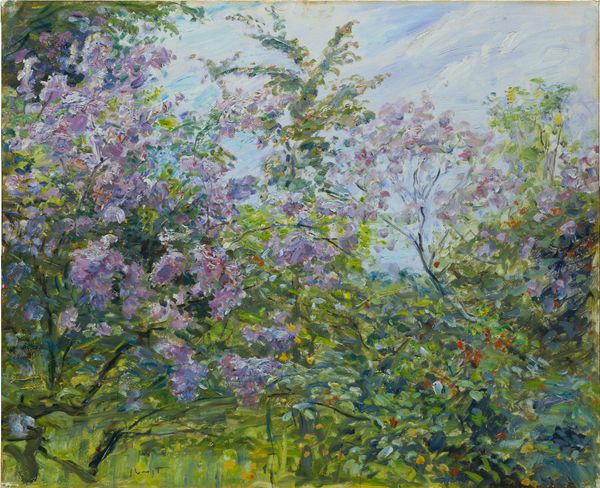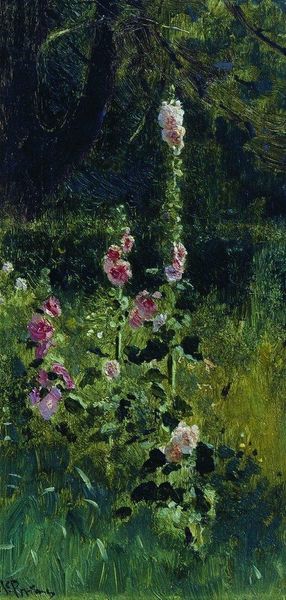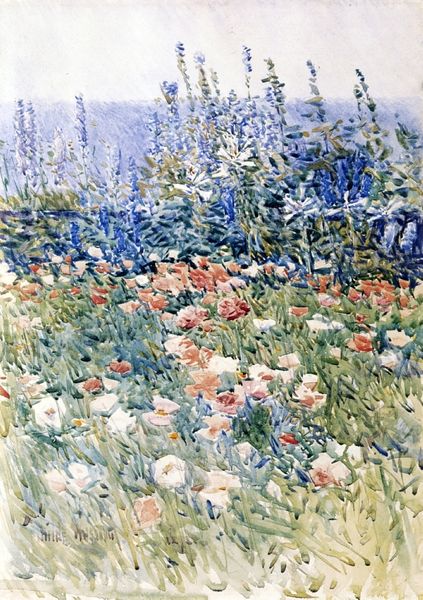
divisionism, painting, plein-air, oil-paint, impasto
#
divisionism
#
painting
#
impressionism
#
plein-air
#
oil-paint
#
landscape
#
flower
#
impressionist landscape
#
nature
#
impasto
#
post-impressionism
Copyright: Public domain
Curator: Welcome. We're standing before “White Flowers in the Field,” attributed to Henri Martin. Notice the divisionist brushwork, creating a shimmering effect across the canvas. What strikes you about it initially? Editor: The impasto! You can practically feel the layers of oil paint, capturing a really thick density. It's as if you could reach out and touch the individual petals and stalks, feeling their texture and materiality under your fingers. The greens, the whites, the density! It looks incredibly lively. Curator: Absolutely. And it's vital to understand the broader context in which this work emerged. Consider how post-impressionist artists like Martin challenged academic norms. These scenes depicting everyday life and landscape served as visual statements. What could an innocent field of flowers signify in its time? How do we see that symbolism today? Editor: That reminds me that this devotion to painting *en plein air*, as was fashionable at the time, reveals a specific commitment: it speaks to an artistic intention to represent reality, however subjectively. There’s a labor inherent in carrying one’s materials, choosing one’s perspective, committing oneself to observe and document directly. It's about bringing art production outside, shifting the site of both work and potential display. Curator: Right. Think of the social movements of the period—the rise of the working class, calls for equality and revolution—that provided a crucial counterpoint to romanticized depictions of nature. Martin’s landscapes weren’t mere escapes; they reflected his own sociopolitical ideas and sensibilities. This wasn't neutral subject matter; painting nature became an expression tied to contemporary issues. Editor: Which makes it all the more interesting to look at this from today's context, observing the consumer practices associated with painting—considering how even landscape becomes a commodity under certain political structures. These landscapes offer us space, visually; where does it connect to the idea of labor relations, now and then? Curator: A powerful thought. Considering that this era emphasized new subjectivities. Let’s carry those themes with us as we continue through the exhibition, keeping in mind the rich dialogue that artworks stimulate when we consider the times and ideologies that informed them. Editor: Precisely. I leave contemplating the tangible effort embedded within this lovely and evocative painting.
Comments
No comments
Be the first to comment and join the conversation on the ultimate creative platform.
